THE TOUCAN INTERVIEW
Maggie Thompson: A Four-Color Life, Part One
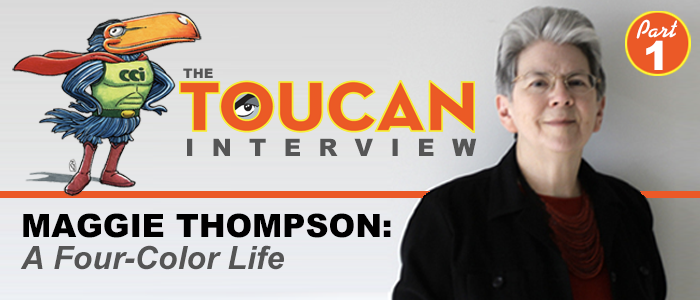
Maggie Thompson is one of the legendary founders of comics fandom. Without her and her late husband, Don Thompson—along with a small number of other comics-loving pioneers—we might not be reading blogs like Toucan or have the ability to enjoy fan-oriented magazines like Comics Buyer’s Guide. We talked to Maggie on Thursday, January 10, one day after the news broke that CBG was ending with the current issue, and two days after her first blog post debuted here on Toucan. Our plan was for a one-hour discussion with Maggie about her love of comics to coincide with her blog launch, but the news of the previous day obviously influenced the interview, as you can see in Part One. (Click on the images to enlarge them.)
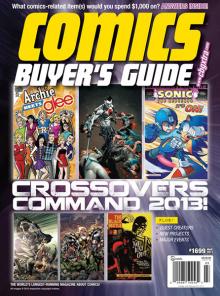
Toucan: Let’s jump right in with the big story: the ending of Comics Buyer’s Guide with its current issue, number 1699. You’ve been involved in this publication in some form since 1972 when you and Don first started writing your “Beautiful Balloons” column. So how do you feel about all of this?
Maggie: I’m sorry that it’s going away. It leaves me personally free to pursue a whole bunch of other projects that I’ve put on a to-do list and now I can put on my hey-do-it-sooner-rather-then-later list. I’m encouraged by the responses that I’ve had from people expressing just how much CBG has meant to them over the years, and I’m very happy that we were able to help the number of people that we were able to help. Some of them are people we didn’t know we were helping at the time. That’s part of the thrill of doing projects that bring people together, as I’m sure you folks at Comic-Con are aware, since you are in much the same situation.
Toucan: Is the demise of CBG a case of the Internet killing a publication, with news sources moving to the net and the ability of fans to go to eBay and other sites to buy collectibles?
Maggie: Well, we were initially an advertising-supported publication. Comics Buyer’s Guide was created as The Buyer’s Guide for Comic Fandom, strictly as an ad-supported publication. As time went on. the original creator, Alan Light, had decided that since he was going to mail it via second class mail, he needed to increase the editorial content from something that was a bonus to something that was a necessity to maintain that mailing privilege. So it evolved and evolved and evolved. What happened when the Internet came along was that . . . actually there were several forces at work. We had classified ads and display ads for a number of different purposes, and some of that went to the Internet. The other thing that happened was that we were a vehicle via which the retailers could stay in touch with one consolidated news source and as that also changed we were less of a necessity to the field. So people would look at advertising budgets and would have other ways of reaching people. And in the fragmentation of entertainment we became a tinier and tinier fragment. It didn’t mean that we didn’t have loyal fans, and we did our best to adapt. We built an online presence which was complicated by the fact that we had to change its format in midstream. Many, many forces that changed our entertainment world certainly changed our world in terms of what we were able to do.
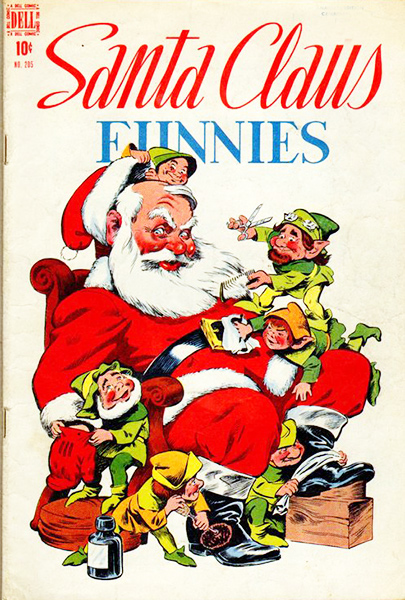
Toucan: As you mentioned in your first Toucan blog post, your parents enjoyed comic books and encouraged you to read them during a time when most parents didn’t allow them in the house. What were some of their favorites?
Maggie: The Walt Kelly material—which actually began the entire comic collecting of my family so that we actually called it a collection—my parents in some cases bought multiple issues because I had siblings. When I was five, my sister was born, so the two of us had comic books that we brought out on whatever the occasions were, for example, Santa Claus Funnies and Christmas with Mother Goose . . . we sat down and read those every Christmas. It became additionally part of our lives because mom and dad became friends with Walt Kelly, and so we sort of went behind the scenes with comics in the late 1940s thanks to that aspect. They were certainly among the first general comics fans as opposed to some of their friends in science fiction, which was mom and dad’s specialty field of interest. So in addition to that there was at least one amateur magazine devoted to comics back in that day, by David Kyle, with whom, by the way, I had dinner on Sunday, and he was a roommate of [comic book artist] John Forte. They had both gone to the same art school, and Forte went into comic book drawing, did Sheena and various other things, and David did not do comic books. What I’m saying is that that was sort of an interlaced world at that point, and so my parents were more familiar with the concept of keeping perishable entertainment as opposed to the rest of the world, which basically discouraged such things, threw it out, considered it momentary entertainment and otherwise disposable.
Toucan: What were your favorites as a kid?
Maggie: Absolutely Walt Kelly was the fundamental keystone of my comics interest; however. I also expanded into things like Uncle Scrooge. I would say the Dell comics were my primary focus for the early years of my comic book reading, although I absolutely read some of the superhero titles back in the day as well. I remember being freaked out by EC comics and having them but sort of keeping them as a scary thing to read. If I was in the mood for something scary, I would look at the EC material. I know that I read some Moon Girl stories because I remember drawing that character, which obviously meant that I had to have read it, but I have no memory of having those comic books; yet I remember the little choker necklace and the weird lace-up shoes and so forth that were part and parcel of EC’s Moon Girl character.
Toucan: Is it because of the influence of your parents that you kept reading comics as you grew older?
Maggie: No, it was because comics kept being good. My interest in comics diminished until the EC line was in full flower and I bought MAD #9 off the newsstand. I thought that was just wonderful and they were sensible enough to promote their other EC titles in MAD, so I started keeping an eye out for that logo on the newsstands. So I sort of morphed from the funny animal world into the EC world rather then into the superhero world.
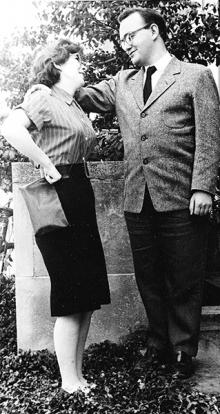
Toucan: And you kept reading comics all the way through to the time that you met Don?
Maggie: Yep, and that was one of our topics of discussion. In fact, that day that we met in June 1957, it was at a picnic of science fiction professionals and fans. Don had hitchhiked to the home of Basil Wells, who is not perhaps a well-known person today, but he was a professional, very active. He lived in western Pennsylvania, and my mother had thought that the picnic was supposed to be at the home of Ed Hamilton and Leigh Brackett, but instead they had gone to Basil’s house and so we drove on there. Anyway, Don had hitchhiked there and we just struck up a conversation and didn’t stop talking. It was movies, it was popular culture of all sorts, TV. We didn’t have a TV set back in the day. At that point he had just finished his sophomore year at Penn State. And of course the thing is that Ed Hamilton and Leigh Brackett were there so the fact that Ed was writing comic books would have made that a topic of discussion. Don had collected Classics Illustrated. Our interests were incredibly similar and our tastes were incredibly similar. So yeah, [we talked] start to finish that day, and then we gave Don a lift on his way home to his town near Titusville, Pennsylvania. And then the first correspondence that we had, Humbug #1 had come out and he folded it up in a #10 envelope and sent it to me and said, “Maybe you missed this on the newsstand . . . here’s a new project by Harvey Kurtzman.”
Toucan: I think that’s something that I grew up with too that people today don’t understand, the thrill of going to a newsstand and not really knowing what was coming out. We have so much knowledge now of what’s happening and what artist is going to start working on what book months down the line, that just the absolute thrill of walking into a newsstand and finding that stuff for the first time is missing. Do you remember things that you found for the very first time?
Maggie: Well, as I said there was MAD #9, which obviously resonated with me. I actually had a dream. It’s one of the few dreams of that era that I remember. My allowance was, I believe, 90 cents a week at one point, and I had dreamt that I had walked into the newsstand. There were two newsstands. There was a newsstand newsstand and then there was also the comics rack at the grocery store that we went to. And I had dreamed that I had gone to one of those news racks and every comic book there was a MAD take-off and my despair was that I only had 90 cents and there were more than 90 titles there, so how could I possibly afford them all.
In terms of what else interested me, Piracy, because there was that ad, and by that time I was looking for anything that was advertised in EC Comics. So we did kind of get that advanced news and by that time I was pretty exclusively into the whole EC field, and I remember that when they did the—goodness, is it New Trend?—the Comics Code-approved ECs, the one that didn’t show up on our newsstand was Extra #1. So it was years before I acquired that. That’s the other thing people don’t understand; they say, “Well, why didn’t you just go into a used magazine shop and just buy it?” If you missed it you’d missed it. That was it. It was gone.
Toucan: My missing book for years was Thor Annual #2.
Maggie: There you go. And people don’t understand, I mean actually there’s a book coming out this year in which I had to explain to the author who had sent me the manuscript to look through that no, the reason the direct market was important was not that we got the comics sooner—which was what the author had presumed—but that you could get all the comic books in one spot. We’re old. You and I are old.
Toucan: I think we’re going to edit that line out, Maggie.
Maggie: All right, you can do that.
Toucan: What was the first convention you went to, the first actual convention other then picnics and things with people with similar interests?
Maggie: The World Science Fiction Convention, 1955 in Cleveland. That was also the first time that I bought a comic book from a—what do you call them?—“huckster” at the convention. It was big-hearted Howard DeVore. He was well known in the science fiction field and he had a table at the Cleveland convention. And one of the things he had at his table was an issue of Animal Comics that preceded any that we had had in our collection. And I said to him—I was 12—“Howard, gosh how much is this?” and he said it is literally priceless. He said you can’t find it anywhere else. So it could be as much money as you have or it could be worthless. There was no price that can be applied to it so he gave it to me. So that’s the way it was back then.
The first comics convention [I attended] was the John Benson Convention in New York City in 1966. Chris Steinbrenner, who worked for WOR in New York City, ran the films, so we saw the Flash Gordon serial. Stan Lee couldn’t be there. Don was on a panel with Leonard Darvin, debating the Comics Code, and there were four women in attendance. There was me, Lee Hoffman, an award-winning professional writer of western fiction, Pat Lupoff, wife of Dick Lupoff—who was in fact a guest a couple years ago at Comic-Con—and Flo Steinberg from Marvel. We were the four.
Toucan: I’m guessing that’s before the Phil Seuling cons, right?
Maggie: Absolutely before the Seuling Cons. The only big convention prior to that in New York was Bernie Bubnis’s afternoon show that some of the New Yorkers went to. But this was, I believe, a multiday affair and mostly it was kids who came up to our shoulder, all boys. I met for the first time Jim Steranko, for example. Maurice Horne was there, Gil Kane, Otto Binder, Roy Thomas were among the attendees, and as I said Leonard Darvin of the Comics Code. And Ted White was in the audience. He was a science fiction writer and editor.
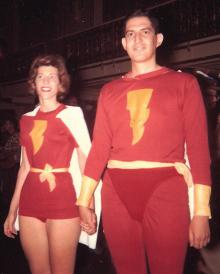
Toucan: This question is an interview in and of itself, but what were the early days of fandom like? I imagine it to be like the early days of movies and TVs and comics, in that there were no set rules or guidelines, and everybody kind of made it up as they went along.
Maggie: Well, in fact we tried to explain some of the rules and guidelines back in the day because we were grown-ups and most of the fans of that day were, say, five to ten years younger. We also came out of the world of science fiction, and Don had been co-producer of the Penn State Science Fiction Society. My mom and dad had done science fiction fanzines. Dick and Pat Lupoff, at the 1960 World Science Fiction Convention in Pittsburgh, had gone as Captain Marvel and Mary Marvel and had handed out copies of their fanzine Xero, their first issue in which they started a column “All in Color for a Dime,” dealing with Captain Marvel. And we didn’t actually get a copy there, but our friend Bill Thailing, who was a magazine and comics dealer in Cleveland, had told us about that. So we got in touch with Dick and Pat after the convention. We have since learned that in all probability the topic of comics collecting and a comic fandom formation was probably because Dick and Pat Lupoff had gone as Captain and Mary Marvel to the costume event at that WorldCon.
So we were talking about comics. We were sitting at a table with Hal Lynch, and we said well, why don’t we do a magazine about it? I was starting college that month at Oberlin, and Don had taken a job at the Cleveland Press so that he could see me on weekends at Oberlin. So he said, well let’s do it, let’s do a magazine about it. We released Harbinger, which was a one-sheet announcement of the fact that we were going to publish Comic Art the next spring and we wanted articles and blah, blah, blah. And as we began, we were sort of an example. Jerry Bails and Roy Thomas were simultaneously having similar discussions, I’m sure, about Alter-Ego, but Harbinger actually preceded Alter-Ego, just in saying hey we’re going to do a magazine, we’ve got a guitar and you’ve got a ukulele and we’ve got a barn and let’s put on a show kind of situation. Later on, we actually did a one-shot magazine called How to Survive Comics Fandom. And it was if you want to do fanzines here are the things you should do and warning about things like feuds and saying rude things about people and here’s the etiquette of dealing with people by mail. It was a multipage thing that was circulated just to kind of tell the teens how to do it, because science fiction fandom by that point had years and years and years of amateur publishing under its belt, including Xero, which had as contributors people like professional science fiction writers, for example, because they were in the New York area. Donald Westlake did an article for Xero, that kind of thing. Robert Bloch wrote an article for that and [contributed to] letter columns, and so forth. All the things that we kind of take for granted now on the Internet were actually established in the world of science fiction fandom.
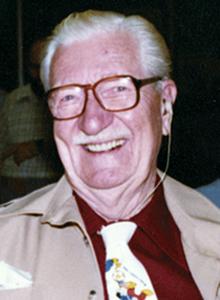
Photo by Jackie Estrada
Toucan: In those days there was no Internet obviously or even print publications or conventions devoted to comics. How did you feel when you first actually started to meet and correspond with other fans who loved comics?
Maggie: Oh it was grand, and one of the aspects of comics of course in those days was that it was almost a secret world of professionals. We were used to knowing who wrote and drew for the science fiction magazines. But a huge amount of the material in comic books was anonymous. Our magazine Comic Art was the very first place that Carl Barks was identified as being the man who created Uncle Scrooge and who was known only as “the Good Duck Artist” among the kids, because he couldn’t sign his name to what he did. But that was the kind of world it was then. So Jesse Marsh didn’t get to sign most of the stuff that he did. Every once in a while a creator would sneak in their signature, but the number of people you could identify—and once identified could reach—was minimal. Which meant that we had the good fortune to be starting a publication at a time when people were pleased to learn that there were people who liked what they did. Carl Barks thought the first communication he received addressed to him was a joke because he was that anonymous.
Toucan: But look at the great second half of a career he had because of all that.
Maggie: Yep, exactly. And remembering that in the material that we did on him in that issue of Comic Art, which by the way I will footnote by saying that the Disney organization told us that we shouldn’t print the article when we went to them for permission to reprint some of the art. And they said no, not only do you not have permission to reprint the art but we don’t want you to run the article at all, because the children of America think that Walt Disney writes and draws it all, so we don’t want to disillusion or disappoint the children of America. And then Disney died, so we contacted them again and they said, oh yeah, sure no problem. But when we talked to Barks he had just retired and the graduating high school class of some school in California had hired him to paint a picture of that school because the school was being shut down. And he said something along the lines of “the money I’m going to get for that looks as big to me now as Scrooge’s money bin.” And the fact that the field of collecting very quickly grew to give him security in his “retirement” to me is just delightful.
Toucan: That’s one of the amazing thing about fandom: bringing information like that to the forefront. And I’m sure when you looked at those books, even as a kid, you knew which issue was by Barks and which issue wasn’t.
Maggie: He was “the Good Duck Artist.” But sure, you get to recognize styles, and there are people who are far more expert in certain styles than I am. I had first had my training noticing Walt Kelly material and I confess that I confused it at times. Al Hubbard had a brush style that was very similar to Kelly’s, and I believe it was a Mary Jane and Sniffles issue that came out, my parents wrote to Kelly and said is that you drawing it and he said no, it’s another artist. Later we found out it was Al Hubbard. So just feeling your way through the different stuff, not to mention the cases in which one guy penciled and one guy inked. It could be very challenging for fans.
In Part Two of the Toucan Interview with Maggie Thompson, Maggie talks about fanzine publishing, All in Color for a Dime, and more on Comics Buyer’s Guide, including the early years editing the publication with Don. Tune in to Toucan next Friday for Part Two!